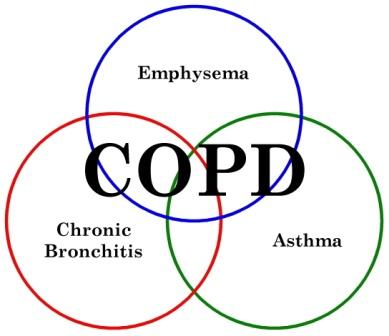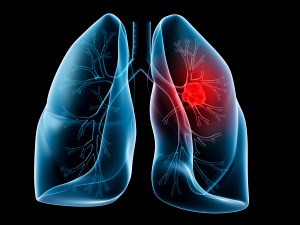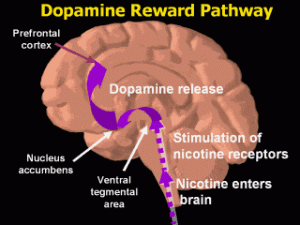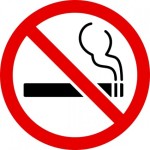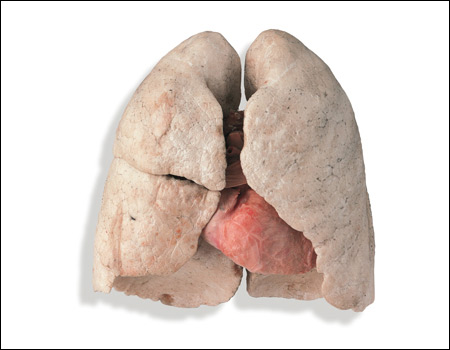What are the effects of smoking?
Smoking can cause serious health problems and in many cases, lead to death. About 4,000 chemicals are present in cigarettes with hundreds being poisonous. This causes damage to just about every aspect of the human body ranging from the inner lining of blood vessels to the outer lining of the skin surface. Damage does not only involve vessels and organs, but also reduces the functioning of organs and reduces the entire body’s immune system.
Over 443,000 deaths per year or one death every 8 seconds or the death toll of two planes full of passengers involved in a head on collision per day. Anyway you want to look at it; people are constantly dying from smoking. Often tobacco users are in denial and believe, ‘that won’t happen to me’, but chances are that it is highly likely to occur. More deaths are due to tobacco than deaths due to HIV, alcohol, illegal drug usage, suicides, car accidents, and murders combined.
What is in a cigarette?
Cigarettes contain hundreds of toxins that are harmful to the body. Some of the most dangerous toxins include:
- Nicotine (addictive substance)
- Tar (cancer causing substance)
- Carbon monoxide (occupies the binding site oxygen normally takes)
- Cyanide present in cigarette smoke (deadly poison and cancer causing substance)
- Ammonia (cancer causing substance)
- Benzene (causes bone marrow depression)
What are the health risks of smoking?
Cardiovascular System
The leading cause of death in the United States due to smoking is surprisingly not lung caner, its heart disease.
Smoking takes its toll on the heart by narrowing the vessels supplying and leaving the heart. Smoking promotes the acceleration of arterial hardening and narrowing and the risk of clot formation. Narrowing of the vessels supplying the heart can precipitate a heart attack.
Smoking can narrow the arteries supplying the brain. A decrease or obstruction in blood flow to the brain due to blood clot can cause stroke, paralysis, and possible dementia.
Smoking can weaken the lining of the aorta, which is the largest blood vessel in the body. High pressures are exerted from the large volume of blood within the aorta. With the effects of smoking weakening the aorta, it is more prone to the development of an aneurysm or bulge. An aneurysm due to vessel weakening, can lead to rupture and massive internal bleeding.
Narrowing of the peripheral arteries in the limbs cause pain while walking, cold extremities, ulcers, and in severe cases gangrene. Treatment of gangrene is by amputation of the affected part.
The kidneys control the body’s blood pressure system. Smoking can even cause a decrease in blood supply to the kidneys resulting in elevated blood pressure. High blood pressure further increases the risk of all the above.
Respiratory System
Smoking is the most common cause of lung cancer. Smoking represents 90% of all lung cancerCOPD-1 cases. If smoking were to be eliminated, lung cancer would become a rare disease.
Smoking also causes COPD which is a collective term for a group of conditions that restrict airflow and make breathing difficult. This is because smoking affects the function of the immune system and increases the risk of respiratory infections. Patients who are unable to breathe due to the effects of smoking are severely restricted even at rest. The quality of life is significantly reduced; therefore airways should be maintained and breathing should not be taken for granted.
Smoking can worsen asthma and counteract medications used for asthma by worsening the inflammation in the airways.
Cancer
Carcinogens (cancer causing agents) in tobacco smoke damages the important genes that control the growth of cells, causing them to grow abnormally or reproduce too rapidly, causing cancer.
Cigarette smoke does its damage by oxidative stress that mutates DNA, promoting the development of cancer and chronic inflammation.
Smoking not only causes cancer in the lung, but also causes cancer at many other sites.
Smoking causes the following cancers:
- Cancer of the oral cavity
- Cancer of the bladder
- Cancer of the esophagus
- Cancer of the kidneys
- Cancer of the pancreas
- Cancer of the cervix
- Cancer of the larynx (voice box)
- Cancer of the pharynx
- Cancer of the stomach
Cancer cells have the tendency to spread and don’t always stay in one place. They may enter the lymphatic system (a network of nodes and vessels that help your body fight disease).
Cancer can also enter the bloodstream and spread to other parts of the body. When cancer spreads, the process is called metastasis. Lung cancer that spreads (metastasizes) often goes to the other lung or the liver, brain, or bones.
Reproductive System and Childhood
Smoking has an affect in reproduction. Smoking increases the risk of infertility in couples and erectile dysfunction in men.
Mothers who smoke during pregnancy are more likely to have a premature birth, stillbirth, or low birth weight babies. The nicotine mother’s smoke during pregnancy crosses the placenta, exposing the baby to nicotine. At birth, the baby will undergo the stress of the withdrawal effects from nicotine is at risk of sudden infant death syndrome. They may also suffer from learning and behavioral problems.
Children and adolescents mimic the actions of their parents. A child with a parent smoker is more likely to smoke than those without parent smokers.
Other Health Effects
Smoking affects the eye and increases the risk of macular degeneration and cataracts. The blood vessels of the eye are sensitive to smoke and can result in red, itchy eyes.
Smoking stains the teeth and gums. The gums are more prone to inflammation and disease causing the teeth to fall out.
Smoking increases the body’s pH levels making the mucosa of the oral and digestive tract susceptible to ulceration.
Smoking causes the skin to lose its elasticity due a reduction of vitamin A levels resulting in wrinkles and pale skin.
Passive Smoking
The people around you whom are exposed to second hand smoke are at higher health risks than you. The smoke burned off from the cigarette is unfiltered and toxic. Smokers indirectly put a loved one or friend at risk.
Infants and children exposed to second hand smoke are more prone to respiratory infections, asthma, and death.
Environmental Effects
Smoking not only affects humans, but the environment as well. Cigarette butts are tossed everywhere. Most smokers toss their cigarette butts out the car window or on any public grounds. A single smoker will have multiple cigarettes a day or even packs a day. The number of cigarette butts combined from all smokers adds up. Cigarette butts are turning up everywhere. The poisonous substances from cigarettes are accumulating in the Earths soil and damaging the ecosystem. Animals are also being exposed to these toxins.
Why do people smoke?
Most smokers are aware of the health risks associated with smoking, yet they continue to smoke. Smoking is addictive just as cocaine or heroin is addictive.
When a smoker inhales smoke, nicotine reaches the brain within 10-20 seconds. Nicotine stimulates a chemical transmitter in the brain called dopamine which provides a feeling of pleasure. When the nicotine levels drop, cravings develop. This cycle can make a person addicted to nicotine
Techniques to stop smoking:
The more education you have on the effects of smoking, the easier it will be to quit. Your health will start to improve the same day you decide to quit smoking, allowing the body to start the healing process. The arrest of smoking can add about 7 years to your lifespan, leading to a better quality of life. The earlier you quit the better. The quality of life will be poor in those who prolong smoking; therefore adding 7 years to your lifespan should be 7 healthy years.
Stopping smoking is the best thing you can do for your health, but it is a difficult task. When you are ready to stop smoking, you need to make a firm commitment. Challenges lie ahead, but the best was to overcome this is to fully believe you can quit and stay smoke-free.
A number of ways are available to assist you through the challenge, including:
- Nicotine replacement therapy (NRT) – products including nicotine gum, lozenge, skin patches, or nasal spray are available. These act by delivering nicotine to the body, but without the poisonous and carcinogenic chemicals from cigarettes. Although these are used as an aid for the cessation of smoking, you must gradually wean yourself off of the nicotine.
- Bupropion (Zyban) – a medication used to help the cessation of smoking. This acts by inhibiting the reuptake of dopamine from the nerves.
- Varenicline (Champix) – a medication used to help in the cessation of smoking. It acts by blocking the effects of nicotine on the brain.
- Behavioral modification programs – these programs help people stop the habit of smoking by stopping the cycle that triggers the urge to smoke. This is achieved by substituting unpleasant associations with pleasant associations and removing smoking ‘triggers’. Common triggers include anger, frustration, stress, hunger, boredom, loneliness, drinking or socializing.
- Alternative therapies– this includes acupuncture or hypnosis. Acupuncture is done by using the application of needles on pressure points to balance the flow of vital energy. Hypnosis is done by putting a person in a relaxed state of mind and suggesting them to quit smoking.
- Yoga and meditation – this can strengthen the mind and body giving you the will and drive to stop smoking permanently. Keeping a positive attitude helps you conquer negative habits.
The truth is that most people require several attempts to quit, but you are not alone. Many support groups or partners are available to you. Getting help from others significantly increases the chances for successfully quitting. A partner can be a family member, friend, or other quitters. Whoever you decide should be fair, understanding, trustworthy, and firm. Having someone to call when a ‘craving’ occurs gives you a chance to calm down and let the craving pass while letting your focus change.
Smoking requires honesty to yourself and your partner. If you are not being honest with your partner and do not tell them of a slip up, you are not utilizing their help. Hiding your cravings and slip ups can lead to a complete relapse. Increase your odds of success by getting the support you need to quit smoking permanently.
Smoking policies are made to encourage you to quit. This is used to reduce cigarette usage, eliminate second hand smoke, and break social norms issuing the acceptability of smoking. Indoor smoking policies are made to enforce an inconvenience to smokers which further encourages you to quit. Help is provided for you to quit smoking in a number of ways. Besides, smoking costs the United States about $96 billion dollars per year in direct medical costs.
Take action by throwing away all cigarettes from your home, car, or any other place you store them.no_smoking_sign_clip_art_23316 Throw away matches, lighters, and ash trays from your settings. Keep smoking aids such as gums or patches with you at all time. When a craving or trigger occurs, try and keep your hands busy with something like filing your nails or by going out and exercising.
Tobacco is the single largest preventable cause of death and disease in the United States.
